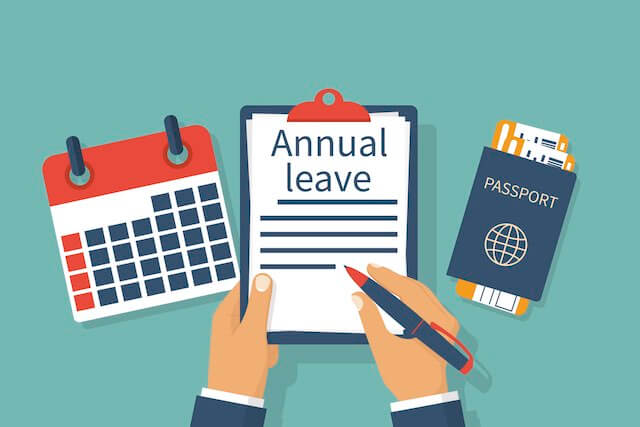Accumulation of Annual Leave
For full-time employees who have been employed for less than 3 years, half of a day of annual leave is accrued each pay period (4 hours every 2 weeks), totaling 13 days, or 104 hours, every year.
With 3 to 15 years of service, full-time feds get ¾ days of annual leave each pay period (6 hours biweekly) except for the last period of the year, where they receive 1.25 days, or 10 hours, in annual leave.
With 15 or more years, a full-time federal employee earns 1 day (8 hours) per pay period. Any accrual rate change that takes place when an employee exceeds the 3-year or 15-year threshold starts at the onset of the first pay period after the employee has completed the needed time of service.
Part-time employees with less than 3 years of service accumulate 1 hour of annual leave for every 20 hours in their pay statuses. This increases to 1 hour for every 13 hours in a pay status with 3 to 15 years of federal service and to 1 hour for every 10 hours worked with 15 years or more.
For “uncommon tours of duty,” either 4, 6, or 8 hours is multiplied by the number of hours in a biweekly pay period, divided by 80.
For those in the Senior Executive Service (SES), the Senior Level pay scale, in Scientific or Professional (ST) occupations, or similar employees as determined by OPM – they all earn 8 hours per pay period regardless of their time in service.
Temporary employees can begin to accrue annual leave after they’ve worked 90 successive days, and they are credited for annual leave they would have earned in their initial 90 days should they reach that point. Intermittent workers on the other hand are not eligible for any annual leave.
Using Annual Leave
The purpose of annual leave is generally to cover paid time off for vacations, rest, relaxation, and other personal business matters or emergencies. Both the employee and his or her supervisor are equally responsible for monitoring the use of annual leave.
Unlike sick leave, only a maximum amount of annual leave carries over from year to year. If an employee requests the use of his or her annual leave promptly, and the supervisor fails to approve the request in a timely fashion or denies the request without following up with the employee on another date to use the leave, these hours might be restored beyond the maximum carry-over due to administrative error.
Similarly, if an annual leave request is approved, but then on the day for which it was scheduled, either inclement weather or an executive order makes the date into a non-workday, the annual leave hours are not deducted from the employee’s balance. It is then the supervisor’s responsibility to follow up with the employee about taking that leave at a later date.
For federal employees working within US borders, the maximum amount of annual leave that can be carried over from one year into the next is 240 hours (30 days). Feds outside of the US can carry over 45 days (360 hours) year-to-year, and for SES, SL, and ST positions, 90 days (720 hours) can be retained at the end of a calendar year. Everything over the limit is considered “use-it-or-lose-it” and if unused, is surrendered at the end of a calendar year’s last pay period.
Lump Sums and Retirement
There are two situations in which an annual leave balance can be cashed out as a lump sum payment: 1) when an employee enters active duty in the Armed Forces, and 2) at retirement. Because, in theory, a federal employee could have 240 hours from a previous year and 240 hours from the current year, he would be able to cash out up to 440 hours should he retire on December 31st. This is the prominent reason why there is a surge of retirement claim applications in OPM’s backlog every December and January.





